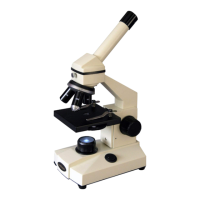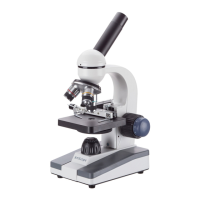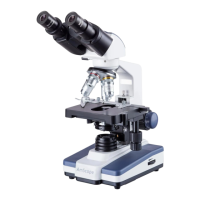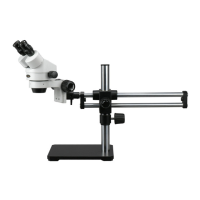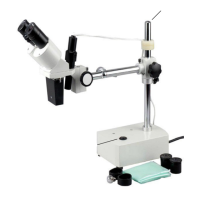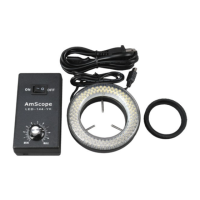11
MU Series (Windows)
User’s Manual
Geng Started
Quick Start
1. Check the packing list on www.amscope.com or included in your package to ensure that you’re received all
items that are to be included:
- 1 Camera Body (SKU on scker) (USB2.0 or USB3.0)
- 1 Reducon Lens/Adapter
- 1 Camera Adapter (30mm to 23.2mm)
- 1 Camera Adapter (30.5mm to 23.2mm)
- 1 Soware CD
- 1 USB Cable
2. The camera can be mounted and assembled in two dierent primary ways:
C-Mount: If you intend to aach the camera via C-mount to your microscope, you can take the camera body
and thread it onto your male C-mount port (25.4mm outer diameter, threaded).
Reducon Lens/Adapter: If you intend to aach via the reducon lens/adapter (23.2mm port size compabil-
ity), please thread the reducon lens onto the camera body.
3. Insert the soware CD into the CD tray of your computer. If your device does not have a CD drive, you can
download the soware from our website at www.amscope.com/soware-download. For instrucons on down-
loading the soware and installing it, please see the following secons.
4. Install both the driver and the soware by following the on screen instrucons. For detailed instrucons on
installing the soware and driver, please see the following secons depending on if installing from the CD or
from a downloaded le from our website (pages 10 - 12).
5. Once the soware and driver are installed, connect the included USB cable to the camera body’s USB port,
and then the USB port on your computer.
6. Acvate the soware by double clicking the AmScope/ToupView shortcut icon on your desktop or Start
Menu.
7. Once the soware has loaded, on the le hand side, you should see the “Device List,” showing your camera.
It may be either named the le name of the driver, or the SKU of your camera (MU300, for example). If you see
the camera listed there, click the name to open up the live feed from the camera
8. Install the camera into your microscope, whether through a 23.2mm, 30mm, or 30.5mm eyepiece, or trin-
ocular port, or via C-mount. Open any shuer ports on your microscope if applicable, and turn the light on the
microscope. You should see an image (although it may require refocusing) from the camera.
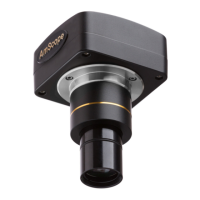
